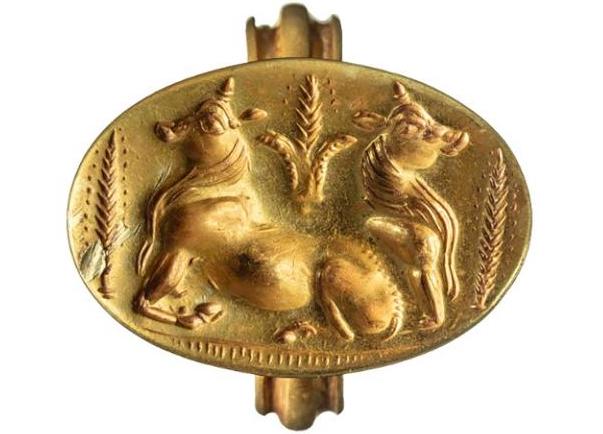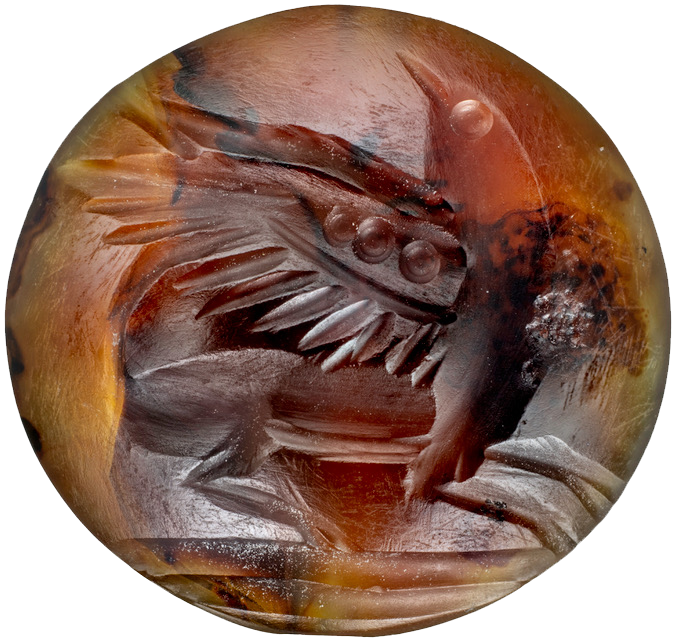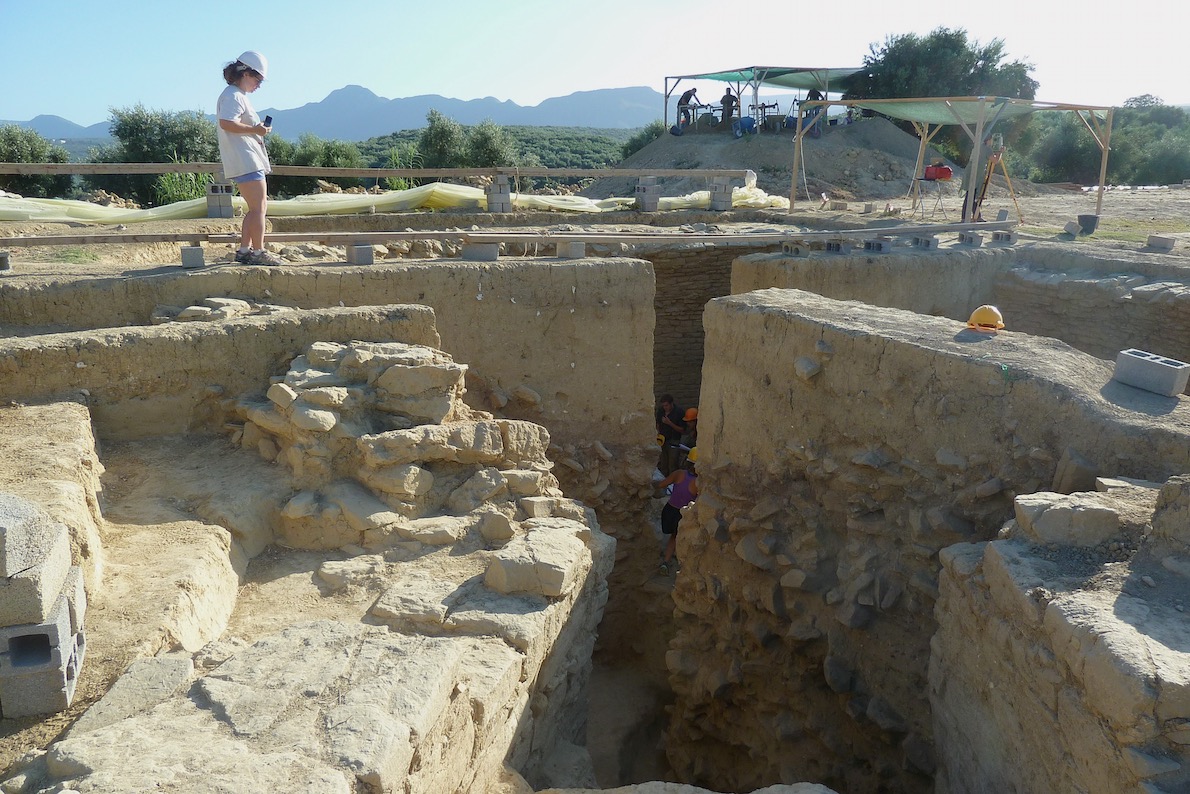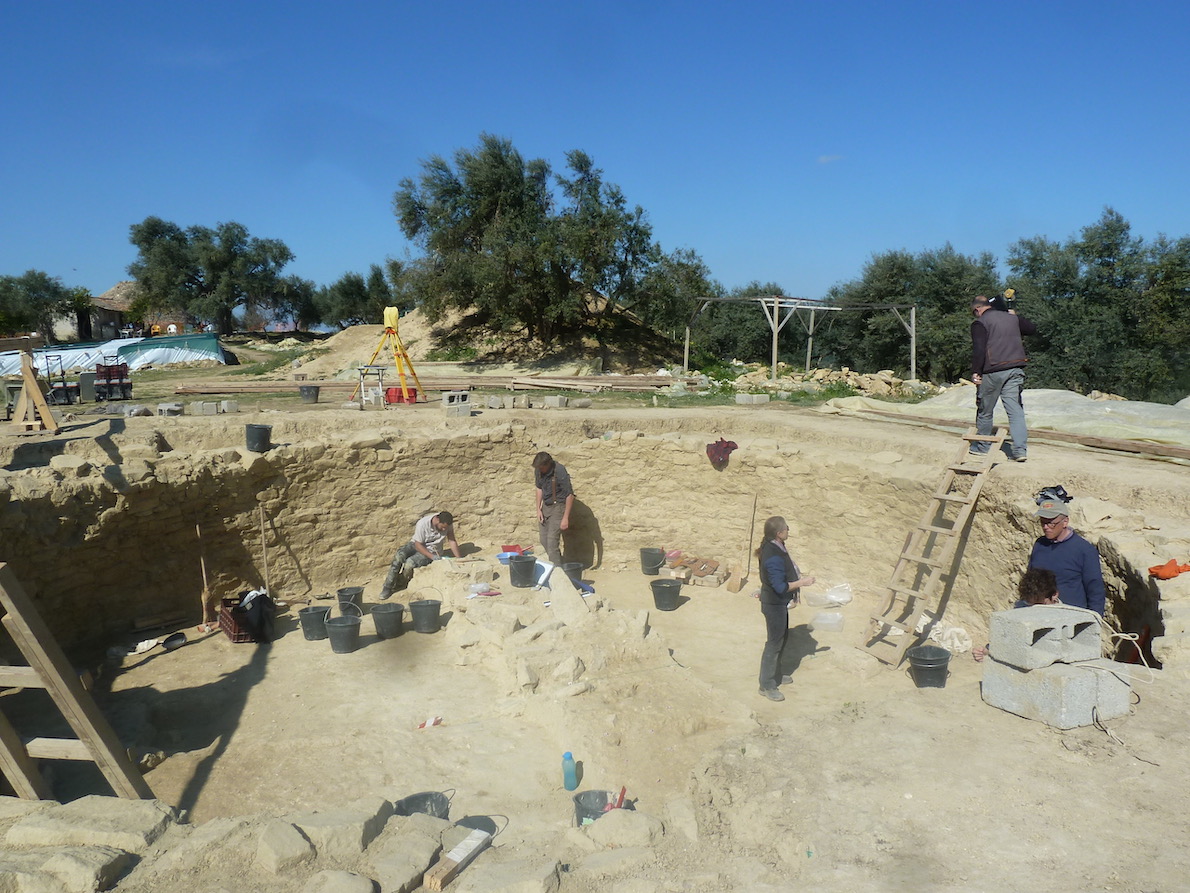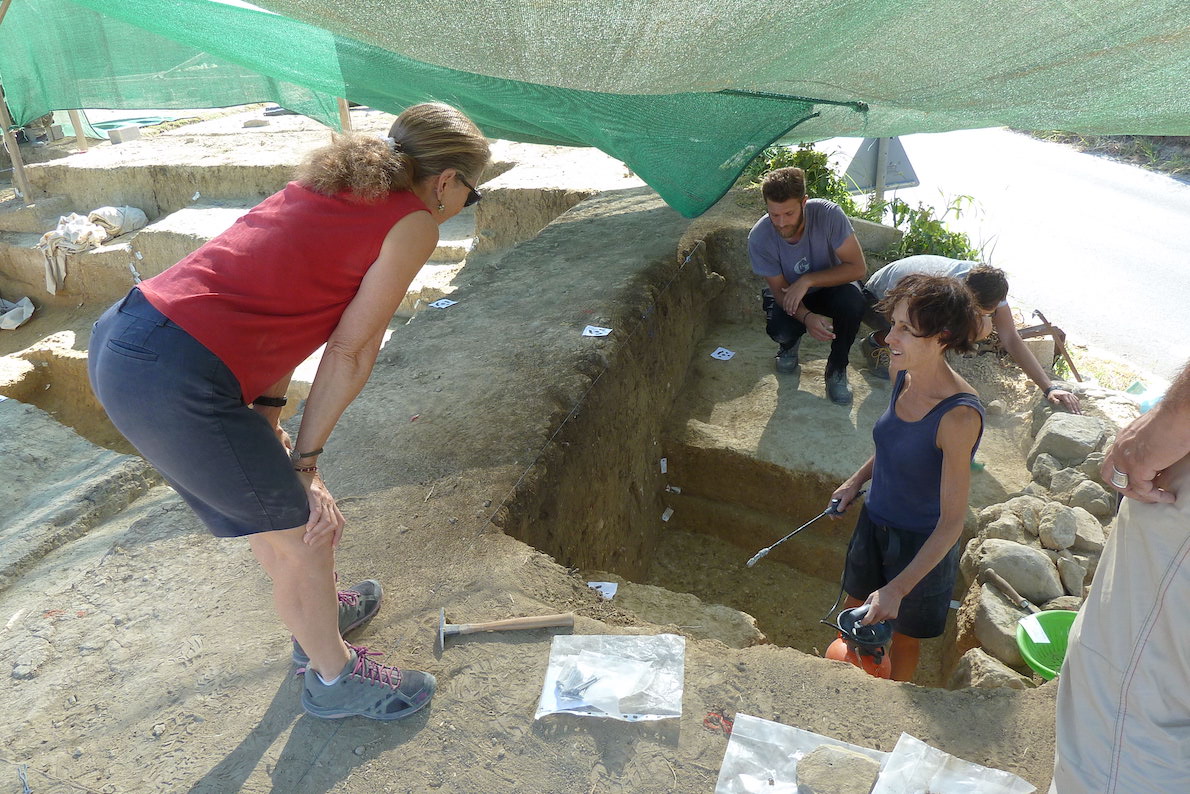Tholos Tombs
In May of 2018 while still conserving and studying finds from the Griffin Warrior Tomb, the team made another monumental discovery: a pair of tholos tombs

Tholos tombs are large, beehive-shaped graves built into slopes of hills.
In Mycenaean times, the bodies of royals were placed in the center of the tomb along with precious grave goods, and after the funerary ceremonies, the mouth of the tomb (“stomion”) was closed with a wall of stones, the blocking wall, which separated the interior of the tomb from the exterior entryway, the dromos. When it came time for another funeral, the stomion was removed, the remains of the previous burial were swept to the side and the accompanying grave goods were recycled.
The story of these tholos tombs’ discovery stretches all the way back to the 1930s when a team led by the project’s predecessor, Dr. Carl Blegen, began excavating the Palace of Nestor and its surrounding area. When it proved impossible to secure the rights to excavate the neighboring Demopoulos Field, the team instead dug close by, discovering a collapsed tholos tomb (“Tholos IV”) in the process.
For decades it was believed that Tholos IV was the burial vault of a single family responsible for the creation of the Mycenaean state of Pylos, but in 2018 when we finally acquired the Demopoulos Field, cleared it of vegetation, and noticed two unusual collections of stones, that interpretation quickly began to fade. Looking to define the stone deposits further, we configured the trenches with them in mind and began excavating. By the end of the month, it was clear that although we had set out to find the lower town associated with the Palace of Nestor, we had instead found two additional tholos tombs (“Tholos VI” and “Tholos VII”).
Blegen’s Tholos IV appears to have been the first constructed and perhaps served as a magnet for later graves. Anyone passing through the gateway in the fortification wall that surrounded the acropolis at the start of the Late Bronze Age would have confronted it straight ahead. Both of the newly discovered tombs as well as the grave of the Griffin Warrior would have been built later in the 15th century B.C. in the phase known as Late Helladic IIA. The Griffin Warrior, in light of so many expressions of both military and religious symbolism represented in the iconography of the objects buried with him, was probably an early Mycenaean wanax. It was that special rank that explains his separate burial. The tholos tombs—including Tholos IV, VI, and VII—would have been the resting places of the other Princes of Pylos and their families.
These important families and individuals were imbued with Minoan culture, building their houses on the acropolis with ashlar blocks in Minoan style, and filling their tombs with Cretan imports of the highest quality. Through the discovery of these tombs, Pylos is looking more like Mycenae now in respect to its cemeteries, hardly backward or provincial at the time of the origins of Mycenaean civilization. Our overall picture of the early stages of the Late Bronze Age on the mainland of Greece is, in fact, becoming clearer than that of Mycenae.
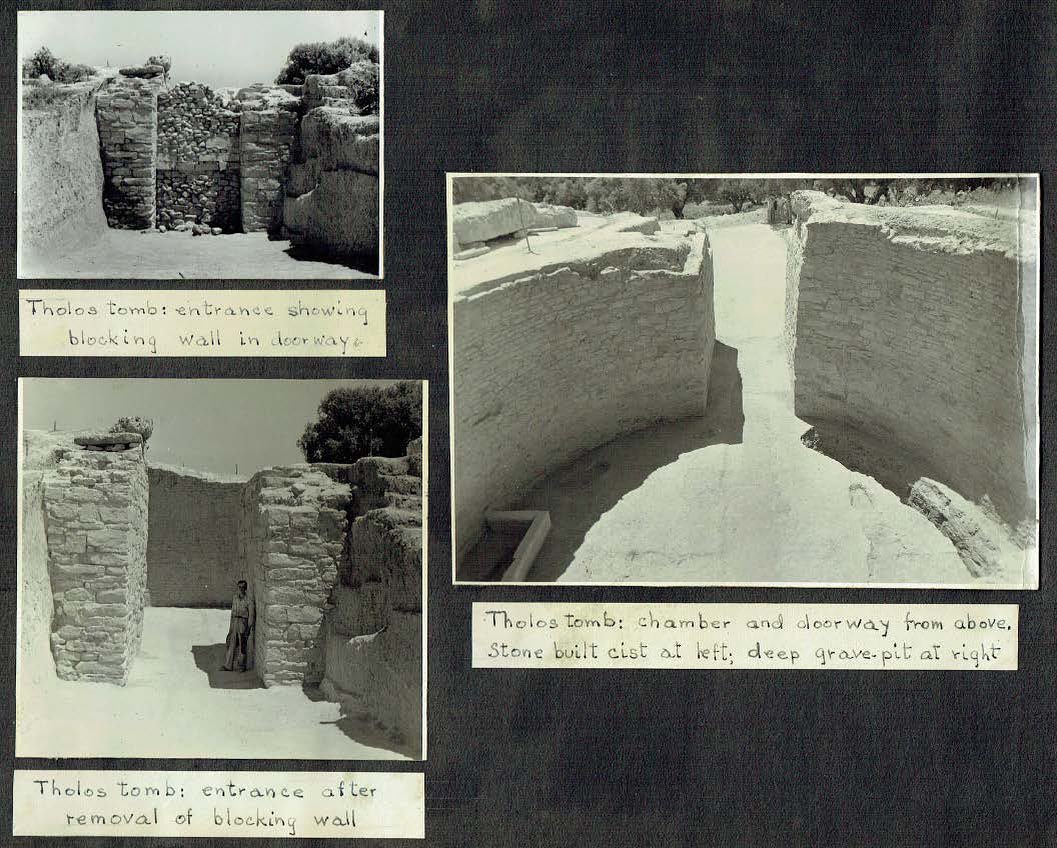
Tholos VI
Dromos
The earthen dromos of Tholos VI lies roughly parallel to the dromos of Tholos IV.
Thalamos
The space within the thalamos of Tholos VI is enormous. It is ca. 12 m. in diameter and its walls are preserved to a height of ca. 4.5 m. above the floor of the tomb.
When we discovered it, it contained, according to our rough estimates, ca. 1000 cubic meters of earth and rocks, the later of which had fallen in various phases as the dome of the tomb had collapsed. There is, however, important stratigraphy within this deposit. We have isolated a phase during which the upper part of the thalamos was used in Archaic-Classical times and, at a lower elevation, there appears to have been a Dark Age presence. We hope to unravel the post-Bronze Age history of this tomb in a detailed manner, and a key element for our endeavor is high-end photogrammetric documentation coupled with detailed spatial mapping in the project GIS.
A peculiar feature of Tholos VI remains unexplained. In the northeastern and southeastern parts of the thalamos were ashlar blocks resting on the floor of the tomb so close to the walls that they could not have fallen into the tomb from above. At this point we are imagining that these blocks were brought here from the acropolis of the Palace of Nestor, salvaged from buildings previously destroyed.
Tholos VII
Dromos
Like the dromoi of the neighboring tholoi, the dromos of Tholos VII is an earthen construction. Although much of it was discovered intact, a portion of it was intentionally destroyed during the construction of a nearby road decades before the tomb’s discovery.
Thalamos
The smaller of the two tombs, Tholos VII is ca. 8.5 m. in diameter with walls that are preserved to a height of ca. 2 m.
Significant Finds from the Tholos Tombs
When they were discovered, the thalamoi of the two tombs had not been disturbed since Antiquity. They were protected from modern looting by some forty thousand watermelon-sized stones that had fallen into their interiors when their vaults collapsed. The overall character of finds that remained is remarkably similar to those from chamber tombs excavated at Mycenae by Christos Tsountas in the later 19th century, particularly in regard to styles of jewelry and other adornments, while we have found evidence, previously absent at Pylos, for ties to the Near East and Egypt.
Hathor Pendant
The discovery of a golden pendant depicting the head of the Egyptian goddess Hathor is particularly interesting in light of the role she played in Egypt as one concerned with the welfare of the dead.
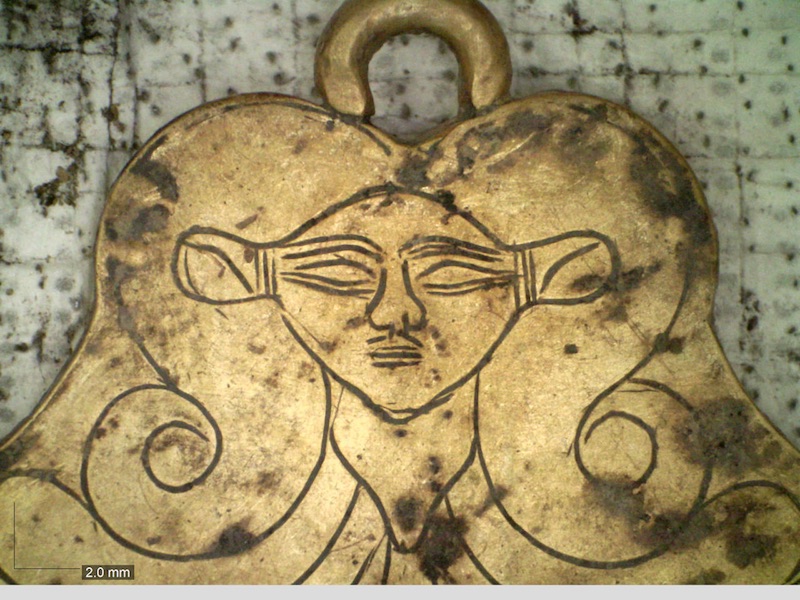
Gold Ring
One of most intricate finds is a gold ring depicting two bovids flanked by stalks of barley, as identified by Tania Valamoti of the University of Thessaloniki.
